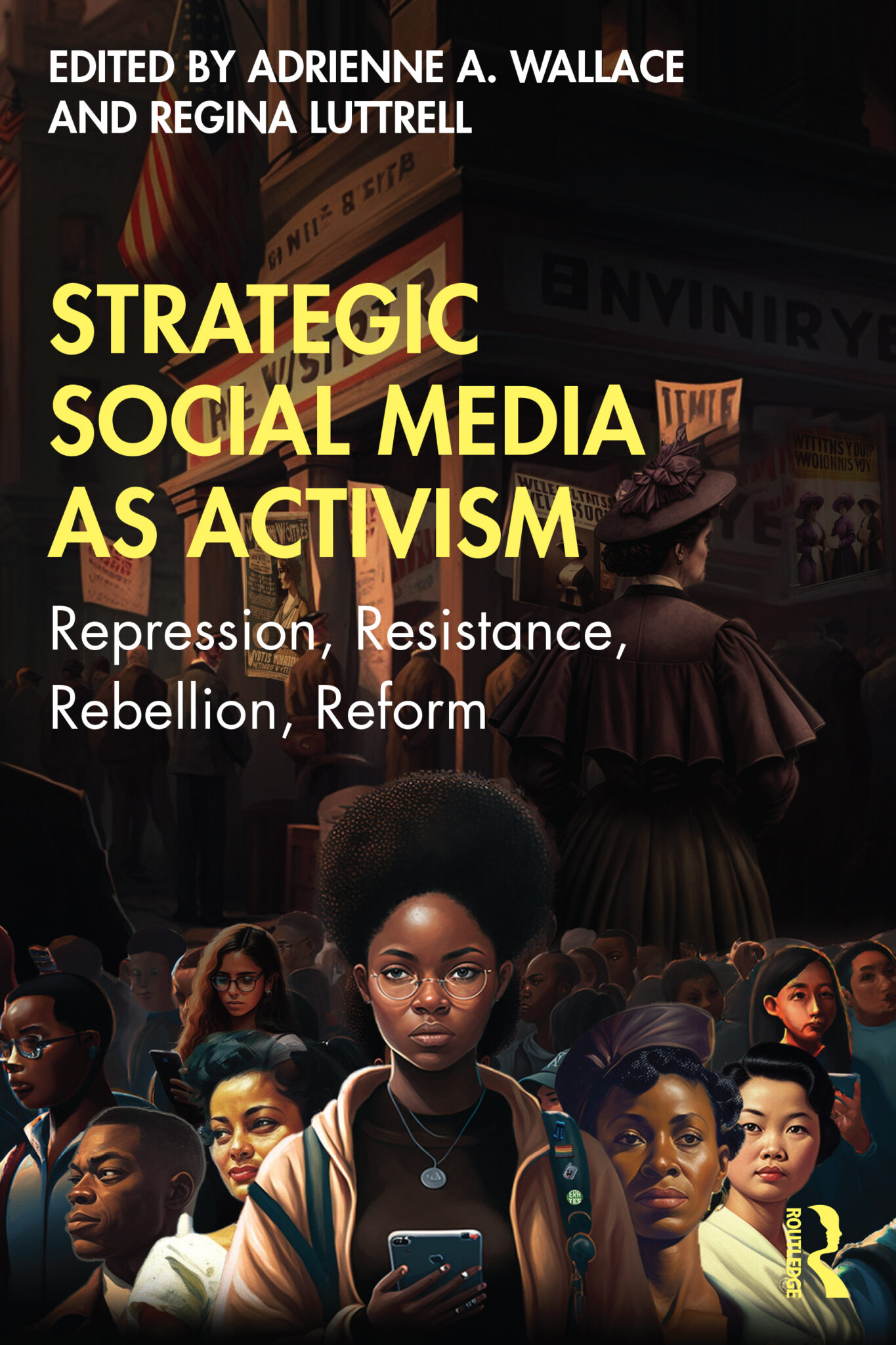Luttrell Publishes Book on Communications and Social Media Messaging for Social Activism, Digital Transformations
Regina Luttrell’s new book, “Strategic Social Media as Activism Repression, Resistance, Rebellion, Reform” is a momentous accomplishment for the newly named senior associate dean of the Newhouse School.

Luttrell co-edited and contributed to the almost 350-page volume with Adrienne A. Wallace, an associate professor of advertising and public relations at Grand Valley State University and adjunct professor in the M.S. in communications program at the Newhouse School.
The book—releasing on August 24—explores the expansive concept of communication and social media messaging in contemporary social activist movements like modern feminism, Black Lives Matter, #MeToo, Missing Murdered Indigenous Women and We Are All Khaled Said. It also looks at emerging concerns within social media and social activism movements, while emphasizing the power of digital collective action.

It’s a “tangible manifestation” of Luttrell’s identity, perspectives and beliefs, she says, and “an extension of a career spent researching and teaching in the realm of social media.”
The book also displays the work of Newhouse assistant teaching professor RC Concepción, who designed the cover, and writings by Luttrell’s students about historical activists like Ida B. Wells-Barnett and Mary E. Britton.
What is the book about?
In the book we explore the role that strategic communications plays in crafting social media messaging campaigns for social activism, activist movements and digital transformations. The book contextualizes activism and its historical connections throughout the world, drawing comparisons with contemporary social movements like modern feminism, Black Lives Matter, #MeToo, Missing Murdered Indigenous Women and We Are All Khaled Said. Each chapter contributes unique layers of depth, forming a comprehensive portrayal of emerging concerns within social media and social activism movements, while also highlighting the intricate dynamics of digital collective action.
How did you come up with the idea for the book?
While writing “Wonder Woman: Warrior, Disrupter, Feminist Icon,” I incorporated a chapter titled “Wonder Womxn: Resistance, Rebellion, Revolution,” delving into the feminist movement within those bounds. That work sparked the genesis of the entire book concept. I immediately shared this idea with my co-author, longtime collaborator and friend, Dr. Adrienne Wallace. She was just as enthusiastic as me, leading us to pull together a comprehensive book proposal with a formidable slate of some of the best researchers and writers in this space. It was vital to us that we included diverse perspectives, voices and leaders within their respective research areas. The last piece fell into place with the addition of the “reform” element, where we spotlighted the outcomes of social activist movements.
How did you involve your students?
Interspersed between each chapter, we’ve introduced a special feature called “Advocates for Action” that highlight the stories and accomplishments of real-life women, gender identifying women and non-binary individuals who have made an impact on the world. My students—Mia Angioletti, Phoebe Bogdanoff, Allison De Young, Jacob Laros, Allison Schuster, Elizabeth Wilson and Claire Zoller—contributed these biographies.
“Advocates for Action” showcase a remarkable partnership with students from my PRL 425 PR Cases & Campaigns course, who had initially undertaken a project for a client that ultimately didn’t materialize. Serendipitously, their work seamlessly dovetailed with the book’s themes. Recognizing their talent and effort, I proposed the idea of featuring their work within the book’s pages.
Collaborating with my students is not new. I enjoy finding projects that resonate with them and helping them bring their ideas to life.
What’s the meaning behind the book’s cover?
The cover of the book was designed by Newhouse’s very own RC Concepción. The cover itself holds a wealth of layered meanings and intricate imagery. If you examine it closely, you’ll notice a woman in the background who seems to be observing posters – a symbolic nod to the Suffragist movement. Positioned at the heart of the cover, the young woman signifies contemporary activism. Yet, if you shift your attention slightly, you’ll spot an image of a woman from the 1950s over her shoulder – embodying the past. Upon closer inspection, you’ll discern four distinct figures, representing past activist movements and their corresponding counterparts for the upcoming generation of activists. Even the pins adorning the young woman’s backpack straps carry subtle significance. The pins symbolize what matters to her, spanning from the LGBTQ+ movement to the Equal Rights Amendment to Black Lives Matter.
Why is this project important to you?
I am incredibly proud of this book. It’s an extension of a career spent researching and teaching in the realm of social media. Beyond that, it serves as a tangible manifestation of aspects of my own identity, perspectives and beliefs.